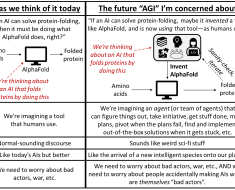In an era where digital threats are constantly evolving, the integration of Artificial Intelligence in cybersecurity has become a pivotal strategy in safeguarding digital assets. We look into the role of AI in cybersecurity, offering insights into its applications, benefits, and real-world examples. As we explore this dynamic field, we’ll address the fundamental question: What is AI in cyber security, and how is it revolutionising the way we protect our digital landscapes?
What is AI in Cyber Security?
At its core, AI in cyber security refers to the use of machine learning algorithms and intelligent systems to detect, thwart, and analyse cyber threats. Unlike traditional security measures, AI-driven systems can learn and adapt, making them exceptionally effective against sophisticated cyberattacks.
The Evolution of Cyber Threats
As cyber threats become more complex, traditional security measures struggle to keep pace. Hackers now employ advanced tactics, including polymorphic malware and social engineering, to bypass conventional security protocols. This is where AI steps in, offering a dynamic and proactive approach to cybersecurity.
How AI is Used in Cybersecurity
AI’s role in cybersecurity is multifaceted, encompassing threat detection, response, and predictive analytics. Let’s explore some key applications:
Real-Time Threat Detection
AI systems are adept at analysing vast amounts of data in real-time, identifying patterns indicative of cyber threats. This capability allows for immediate detection and response to potential breaches, significantly reducing the window of opportunity for attackers.
Predictive Analytics
AI goes beyond reactive measures, employing predictive analytics to foresee potential vulnerabilities and threats. By analysing historical data and current trends, AI can predict where and how future attacks might occur, enabling preemptive security measures.
Automated Response
In the event of a detected threat, AI can initiate automated responses, such as isolating affected systems or deploying countermeasures. This rapid response is crucial in minimising damage and preventing the spread of an attack.
AI in Cybersecurity Examples
To illustrate the impact of AI in cybersecurity, let’s examine a few real-world examples:
- AI-Powered Intrusion Detection Systems – One of the most prominent applications of AI in cybersecurity is in intrusion detection systems (IDS). These systems utilise AI to analyse network traffic, identifying anomalies that could indicate a breach. By learning normal network behaviour, AI-driven IDS can accurately distinguish between benign activities and genuine threats.
- Phishing Detection – AI algorithms are increasingly used to identify and block phishing attempts. By analysing email content, sender information, and user behaviour, AI can detect subtle signs of phishing that might elude traditional filters.
- Behavioural Analytics – Behavioural analytics powered by AI can detect unusual user activities that might indicate a compromised account. For instance, if a user suddenly accesses sensitive data at an unusual hour, the system can flag this activity for further investigation.
The integration of AI in cybersecurity represents a significant leap forward in our ability to protect digital assets. By leveraging AI’s capabilities in real-time threat detection, predictive analytics, and automated response, we can stay one step ahead of cybercriminals. As the digital landscape continues to evolve, so too will the role of AI in safeguarding it, ensuring that our data remains secure in an increasingly interconnected world.




